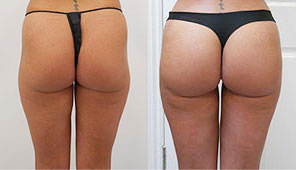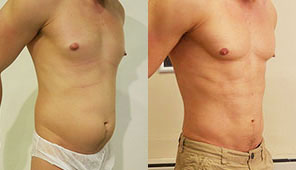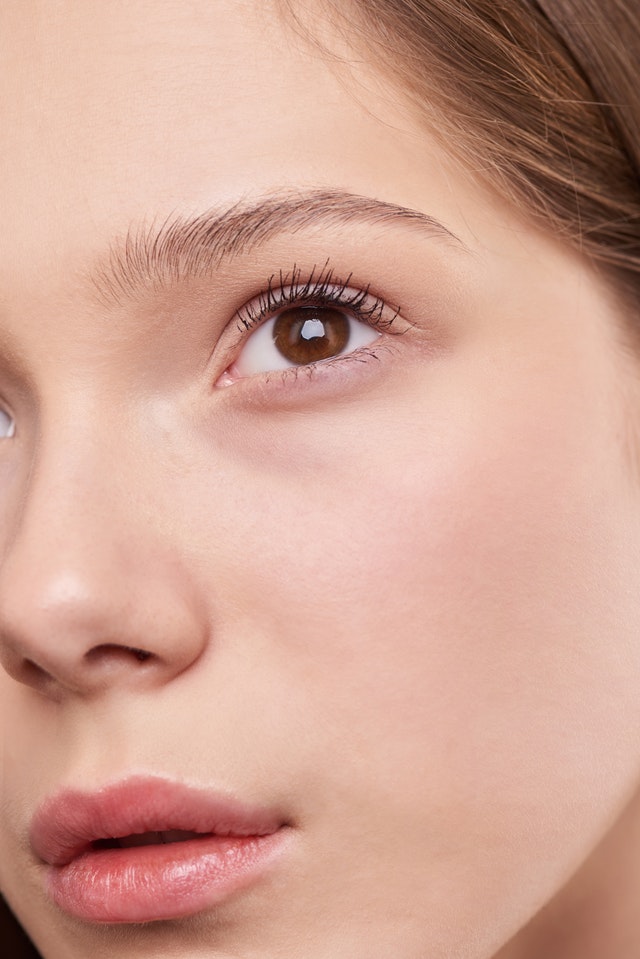Mini Facelift
Offered at our convenient location in London
Also known as the “short scar facelift” and the “limited incision facelift”, the mini facelift is a cosmetic procedure that lifts and rejuvenates the face in a less invasive way than a standard facelift. There are many ways to fight signs of ageing in our skin, but the most effective and long-lasting methods involve physical alterations to the structure of the face. The rhytidectomy, the medical term for the facelift, has been a standard surgery for cosmetic surgeons worldwide for many years. And now, with refinements in surgical techniques, and advances in anesthesiology, patients have the option to choose a facelift technique that limits scarring to a minimum and has far shorter recovery times.
The purpose of a facelift is to lift tissue and smooth wrinkles and lines to mitigate signs of ageing. One of the main criticisms of the facelifts of the past has been that they do not look as natural as they could. If skin is overstretched, the face can have a surprised or “wind-swept” appearance. Mini facelifts are an attractive alternative as they can produce more natural-looking results. Finding a surgeon with extensive facial surgery experience is essential when choosing to undergo a cosmetic procedure. That’s why many men and women choose Dr. Grant Hamlet in Highgate for premier care and effective aesthetic procedures. Simply fill out an online contact form to make an inquiry, or call our offices directly at 0207 127 4377 to find out how a mini facelift could
Contents
Facial Ageing
It is important to understand what causes facial ageing to better understand how a mini facelift works. As we age, our skin is influenced by intrinsic factors such as our genetics, our metabolism, and our hormones, and extrinsic factors outside the body such as UV exposure, airborne chemicals, and pollution.(1)
Signs of Facial Ageing
- Skin Laxity
- Volume Loss
- Jowls
- Nasolabial Folds
- Crow’s Feet
- Horizontal Forehead Lines
- Glabellar Lines
- Dark spots
- Dull, Textured Skin
There are some issues that anti-ageing creams just can’t address. And, one of the main factors that contributes to change in facial features is gravity itself. Gravity pulls tissue downward, weakening suspensory ligaments and causing skin sagging. Research also confirms that localised loss of fatty tissue and the deterioration of facial bone occurs as a part of the ageing process.(2) These changes often result in our faces becoming less friendly-looking or give us a more tired appearance.
Facelifts alter the underlying musculature of the face as well as lifting sagging skin. The superficial musculoaponeurotic system (SMAS) is the name given to the muscles and tissues of the face. Surgeons skillfully adjust the position of these muscles as well as removing excess tissue where necessary. This provides patients with comprehensive rejuvenating effects that are effective and long-lasting.
How is a Mini Facelift Different From a Standard Facelift?
Facelifts have two main goals; to reposition soft tissue in the face that has descended over time, and to reduce the amount of excess skin present.(2) But what are the differences between the standard rhytidectomy and the mini rhytidectomy? One of the main differences is where the two surgeries affect most. During a standard facelift procedure, a surgeon will change the appearance of the entire face. In contrast, a mini facelift focuses on the lower half of the face. Patient surveys confirm some men and women want to address facial ageing surgically, but prefer to forgo the full facelift to target specific areas of the face.(3) Having more freedom of choice in facial rejuvenation ensures a patient can choose the surgery that’s the best fit for their unique requirements.
Benefits of a Mini Facelift
A mini facelift procedure can revitalise your complexion and help you rediscover your confidence. It’s a great choice for patients who want to improve the appearance of their lower face surgically. Jowls can be tightened, nasolabial lines smoothed, and sagging skin below the cheekbones can be lifted. Additionally, patients choose the mini facelift for the following reasons:
- Surgeons and patients can choose local or general anaesthesia for the procedure.
- Provides a smoother, younger-looking facial appearance.
- The surgeon makes shorter incisions so there’s less scarring.
- It’s an in-office outpatient procedure, meaning you can go home the same day.
- There’s a shorter period of recovery compared to a standard facelift.
Candidates
Facelifts are one of the most popular types of cosmetic procedures for people over the age of 50. But, what a lot of people don’t realise is that they’re an option for younger patients too. In fact, a mini facelift can act as a preemptive measure to mitigate the need for surgery later in life! Men and women who are in good health, with no acute or chronic conditions that could affect the success of their treatment, may be considered. Healthy individuals with realistic expectations are the best candidates for a short scar facelift.
Personal Consultation
At Dr. Grant Hamlet, we provide our premium surgical services at the Highgate Private Hospital in North London. No surgery is performed until we have spoken to you personally to find out about your cosmetic concerns, and until we have found the best way to treat them. Your personal consultation with us gives you the opportunity to discuss the areas of your face you’re dissatisfied with. We will look at facial symmetry, tissue laxity, and the extent of your wrinkles and lines. We will also pay particular attention to skin sagging in the lower face. If you are a good candidate for a mini facelift, we will provide you with some preoperative instructions and schedule your surgery.
Preparation
To prepare for your mini facelift procedure, we ask that you do the following:
- If you smoke, quit smoking at least a month before your procedure date, and continue to avoid smoking after your surgery. Nicotine restricts blood flow and may negatively impact the procedure and your recovery afterwards.
- Don’t take anti-inflammatory medicines (NSAIDs such as aspirin and ibuprofen) at least two weeks before your surgery date.
- Get your prescriptions from the chemist before coming to see us so you’re well-prepared for your recovery.
The Mini Facelift Procedure
Conveniently for our patients, we perform the mini facelift procedure on an outpatient basis. You can also choose the anaesthesia option that suits you best. Regardless of the choice you make, you can return home the same day as your surgery.
When you come in for your surgery, we will ensure you are comfortable in our treatment room and prepare you for your mini facelift. After we administer your anaesthesia and wait for it to take effect, your surgeon will make small incisions around each ear. These discrete incisions extend into the hairline. Your surgeon will then reduce skin sagging in the mid- and lower face, by lifting tissue and repositioning it. Once the tissue is placed, excess skin is removed. This smooths and tightens tissue, removes jowls, and rejuvenates your lower face profile. Finally, your surgeon will carefully suture the short incisions and wrap your head in a compression garment.
While standard rhytidectomy procedures can take up to four hours to complete, mini facelifts are usually complete in around two hours!
Recovery
Most patients wear their compression garment as directed for around two weeks. In that time, you may experience some bruising, swelling, and discomfort. Please take the medicine we prescribed as necessary to mitigate these effects. We recommend taking a few days off work immediately after your surgery so you can give your body the best chance to heal quickly. Some patients may be able to return to work immediately after their procedure. The initial healing phase will be over after only a few weeks.
Results
You will see the final results of your mini facelift in 6-12 months. Your facial skin will be visibly lifted and the wrinkles and lines in the area will be smoothed away. You will have a brighter, more youthful appearance that will remain for many years to come!
Corresponding & Complementary Procedures
Blepharoplasty – A blepharoplasty, or eyelid lift, is the perfect accompaniment to a mini facelift. If you suffer from excess skin that impedes your vision and gives you a tired or angry appearance, consider a blepharoplasty to address it. Upper, lower, and combination blepharoplasty procedures help men and women show off their naturally striking eyes as well as addressing functional issues.
Botox & Fillers – Your surgeon can use one of many non-surgical methods to rejuvenate your face. Neuromodulators like Botox can smooth wrinkles, while dermal fillers can plump skin and encourage new collagen production.
Anti-Aging Therapy – Bioidentical hormone therapy for women and testosterone replacement for men are just two of the anti-aging treatments available at Dr. Grant Hamlet. Reinvigorate and revitalise yourself with an anti-aging therapy for renewed confidence and vigour.
Cost of a Mini Facelift in North London
Every patient’s requirements are different, so the cost of a mini facelift will vary according to your circumstances. We will assess your individual needs during a personal consultation at our Highgate location. If you are interested in finding out more about financing your surgery, please visit our financing page.
Read Dr. Grant Hamlet blog and join us on Twitter, Instagram, Facebook for the latest news about cosmetic surgery in London! And, see our founder Dr. Grant Hamlet in the news here!
References
- Ganceviciene, R., Liakou, A. I., Theodoridis, A., Makrantonaki, E., & Zouboulis, C. C. (2012). Skin anti-aging strategies. Dermato-Endocrinology, 4(3), 308–319. https://doi.org/10.4161/derm.22804
- Yang, A. J., & Hohman, M. H. (2021). Rhytidectomy. PubMed; StatPearls Publishing. https://www.ncbi.nlm.nih.gov/books/NBK564338/
- Duminy, F., Hudson, D. The Mini Rhytidectomy. Aesth. Plast. Surg. 21, 280–284 (1997). https://doi.org/10.1007/s002669900126








